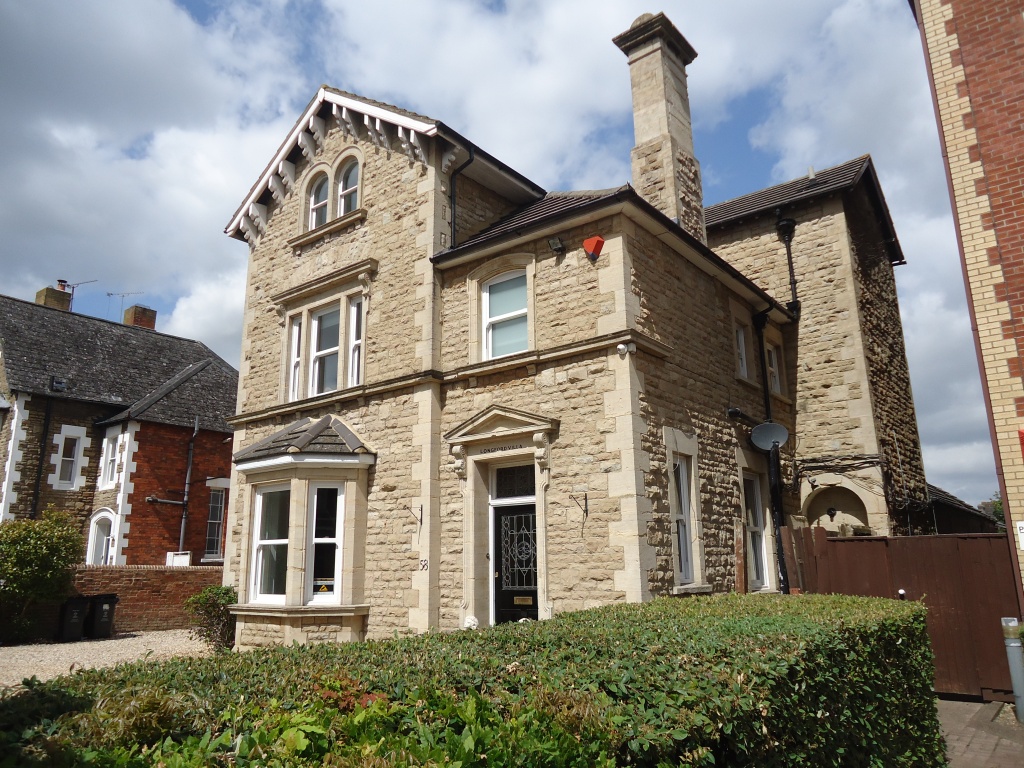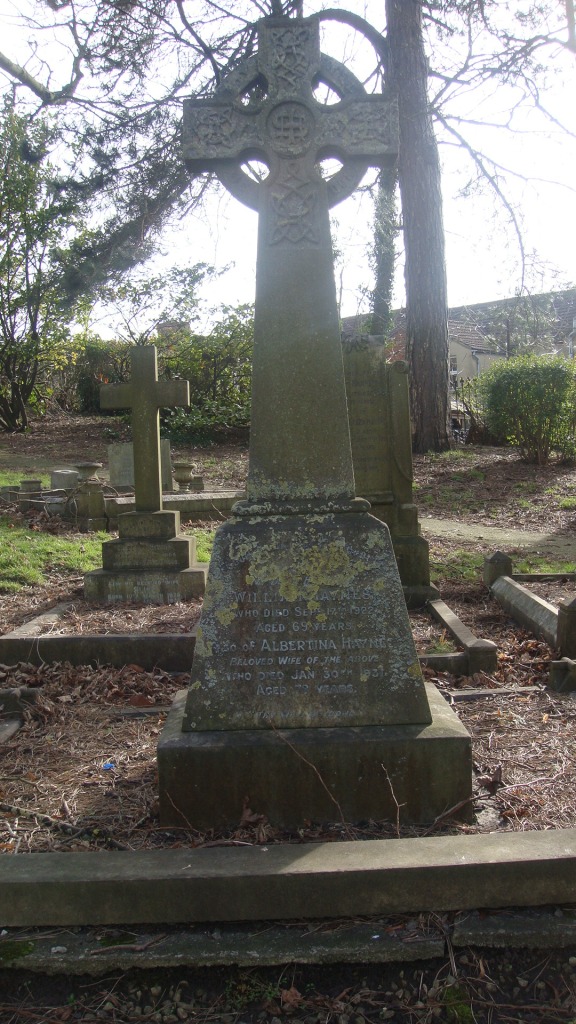The re-imagined story …
I’d walked past 10 Bath Road many times before. It was a pretty little house with a charming wrought iron porch, but it was very neglected. The woodwork badly needed a coat of paint and moss grew in the guttering and obviously hadn’t been cleared out in years. I never saw anyone go in or out, but then I don’t suppose you very often see the people who live in the houses you walk past.
I began training as a district nurse at the Victoria Hospital in 1956 under the supervision of the formidable Nurse Morris. Our first call that Monday morning was at 10 Bath Road.
“This is the home of Miss Mary and Miss Frances Wilton,” Nurse Morris explained. “Miss Frances had a fall several weeks ago and I’ve been dressing an ulcer on her leg.” She paused to look at me. “You’re not squeamish, I hope.”
I thought she was making a reference to the wound I was about to see.
“I’ll not make a very good nurse if I am,” I laughed, full of youthful audacity.
Nurse Morris raised her eyebrows. She wasn’t impressed. She said nothing.
We leant our bicycles against the garden wall and Nurse Morris knocked on the front door. We waited for what seemed like a very long time.
“No one in?”
“Miss Mary is over 80 years old,” she snapped back. I wasn’t making a very good impression. I pulled a face at Nurse Morris, behind her back, obviously.
Eventually the front door with the chipped paintwork opened a crack.
“Nurse, welcome, welcome. Do come in,” a soft voice greeted us.
“Good morning Miss Mary. I’ve brought a student with me today, hope that’s alright with you?” She turned back to me with such a glare, I wasn’t quite sure what I had done wrong this time. “Miss Mary, this is Linda.” I held out my hand and in the dark hallway the smallest, little wizen hand grasped mine.
“How nice to meet you, my dear. My sister and I seldom receive visitors these days.”
Miss Mary, when I could eventually see her in the murky hall, was as neat as a pin; until I looked again more closely. The little bird like figure was dressed in a long, dark dress, stained and stiff with dirt. Her long, white hair was tied up in a neat bun on top of her head but her wrinkled face was engrained with dirt. She had the twinkliest blue eyes and an engaging smile. She must have been a lovely looking young woman.
Now the smell inside the house hit me. It was indescribable. A cocktail of human excrement and cat wee and unemptied bins and something I couldn’t even put a name to.
I looked at Nurse Morris for some kind of explanation, but she clearly wasn’t disposed to give me one.
Miss Mary led us into what had once been an elegant dining room overlooking the front garden, but which now served as a bedroom for our patient.
“Good morning Miss Frances. How is the leg?”
At first I could barely see the old lady lying in the bed, so small was she. If Miss Mary was tiny, Miss Frances was skeletal, her face cadaverous. I tried not to stare, but I couldn’t help myself. I was shocked by the physical condition of these two sisters who were malnourished and filthy, their home dirty, unhygienic and neglected. A cat that had been sitting on the bottom of the bed suddenly sprang into the dark corner of the room where there was a sudden scurrying and a squeaking.
“This is looking much better, Miss Frances,” said Nurse Morris as she began to clean the ulcer on the lady’s shin.
“Would you two nurses like a cup of tea?” asked Miss Mary.
I dare hardly imagine the state of the kitchen, but before I could reply Nurse Morris shot me another warning glance.
“Thank you, Miss Mary, but we had a cuppa with our last lady. I’m fine, how about you Linda?”
“Yes, I mean no, no thank you,” I stuttered.
Nurse Morris maintained an easy conversation with the two women as she worked and soon our patient was settled back against the grubby pillows on the bed.
“Well I think that’s us done for today,” she said. “Is there anything we can help you with while we’re here? Shall we empty this commode?”
Please, please don’t ask me to do that, I thought. And where would we begin. They both needed a bath, the bedclothes needed changing, their clothes need washing and that’s before any attempt was made on the filthy house.
“No thank you nurse,” said Miss Mary with the sweetest, gentlest smile. “We’re just ticketyboo, aren’t we Fan?” She rested her claw like hand on her sister’s skinny shoulder.
The front door had barely closed on us when Nurse Morris laid into me.
“Before you say one word, young lady you must learn to disguise your emotions, especially your disgust. Those two ladies are perfectly aware of the conditions they are living in. They are old, not stupid.”
“But why would you put up with that?” The smell of the house clung to my clothes.
“Because they are proud and they don’t want to ask for help.”
“Someone should sort them out.”
“Have you got grandparents?”
I had and they lived in a tidy little terrace house in Gorse Hill. Was she going to make some kind of comparison?
“And would they appreciate someone barging in and telling them what to do, touching their things and clearing up and throwing things away?”
“No, but …”
“If you are going to be a good district nurse you must quickly learn compassion and empathy.” We pushed our bicycles side by side, back to the hospital.
“They value their independence. Would you take that away?”
“No, but …”
I could not argue with Nurse Morris, but I knew there must be some solution to the ladies’s predicament, some way of providing them with help without robbing them of their dignity. I learnt a valuable lesson that day and have Nurse Morris to thank for my long career in nursing. And of course the Misses Wilton.
The facts …
The imposing monument pictured below marks the grave of the Wilton family. The burial registers record that it covers plots D5a and D6a with six graves reserved in a brick built vault.
Elizabeth was the first to die and the dedication on the prominent face of the memorial is to her. What is interesting is the name of the property that was the Wilton home in 1905 – ‘Old Croft’ Bath Road. Research has revealed that Old Croft, 10 Bath Road was the family home for more than sixty years. In 1901 10 Bath Road was the home of Swindon architect William Henry Read, so unless some renumbering took place in the early 20th century it is possible to trace the house history of this property for almost 100 years.
George Wilton was a butcher by trade and for more than 30 years the family lived over the shop at 58 Fleet Street. He married Elizabeth Townsend at St Leonard’s Church, Broad Blunsdon on October 25, 1870. She was 37 years old and he was 49 so quite a mature couple for a first marriage. Their first daughter Mercy Joanna was born on October 31, 1871, followed by Ruth Edith on November 19, 1872, Frances Elizabeth on March 25, 1874 and finally Mary Townsend on March 15, 1875.
The Wilton family were a very private, close knit unit. The four daughters didn’t marry, didn’t have any children, or nephews and nieces to tell their story. How did they end their days? Mercy and Ruth both died in the 1940s but Frances and Mary lived on into the 1960s and extreme old age. Were they comfortably off, well provided for, well cared for? Were they fit and vital in their last years? Did they belong to clubs and societies? Did they have a wide circle of friends? Is my re-imagined story way off the mark?
George died in 1908 and the Faringdon Advertiser and Vale of the White Horse Gazette published the following obituary.
‘Death of Mr George Wilton – General regret will be felt at the news of the death of Mr George Wilton, which took place at his residence, Old Croft, Bath Road, Swindon on Tuesday morning. Deceased, who was in his 87th year, was born at Oaksey. He was the oldest butcher in the town, and in an unbroken period of about 35 years he conducted a successful business in Fleet Street, retiring a little less than three years ago. Mr Wilton was a purveyor of the old fashioned type, and his excellent judgment and the dependable character of his stock established for him the reputation of being the leading butcher in New Swindon for many years. Apart from his business, to which he was most devoted, Mr Wilton was in no sense a public man, and was, in fact, of a retiring disposition. His wife pre-deceased him about three years ago, but there remain four daughters to mourn a heavy loss. Although burdened by the weight of years, Mr Wilton was in his usual health until Boxing Day from which time the fatal illness really dated.’
All four sisters lived on a private income with Mary appearing to be the only one to have paid employment when in 1939 she was working as a Brewery Cashier.
When Mercy died in 1944 she left £2,611 6s to her sister Mary. Ruth, who died two years later, left more than £3,800, also to Mary. However, when Mary died in 1961 her effects were valued at just £411 19s which she left to the last surviving sister Frances.
All four sisters are buried with their parents.





